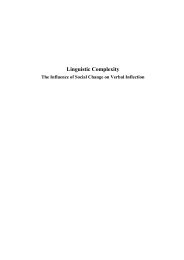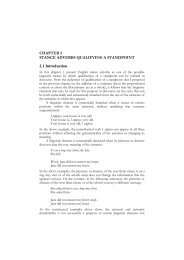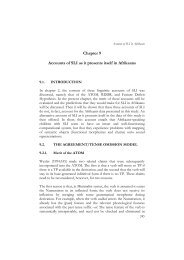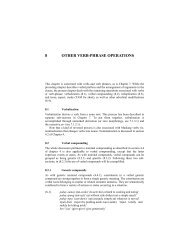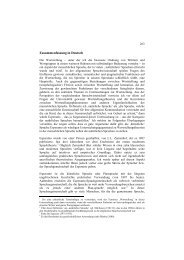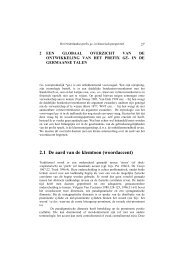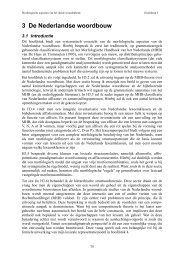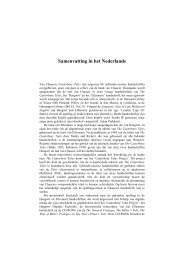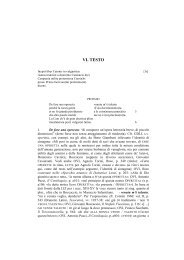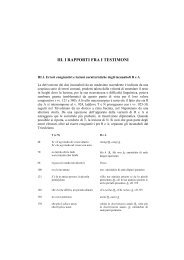Chapter 2 - LOT publications
Chapter 2 - LOT publications
Chapter 2 - LOT publications
Create successful ePaper yourself
Turn your PDF publications into a flip-book with our unique Google optimized e-Paper software.
<strong>Chapter</strong> 2<br />
of causatives in Kulikov’s typology are within the range of the functions of the<br />
common causative suffix.<br />
The remainder of the chapter is organized into five sections. 2.2. discusses forms of<br />
causative morphemes. 2.3. considers causative structures such as double, subjectless<br />
and intransitive causatives. 2.4. discusses the semantics of Oromo causatives while<br />
2.5. discusses argument structures with respect to numbers of agents and causers.<br />
2.2. Forms of the Causative<br />
In Oromo the morpheme –is- or –s- derives single causatives while the morpheme<br />
-sis- can be used in single and double causatives. The form –ss- marks a<br />
single causative and is a variant of –s-. The morpheme –(e)ess- is de-adjectival/denominal<br />
causative morpheme.<br />
Table of Oromo Causative morphemes<br />
Label Form meaning<br />
CAUS 1 -is-/-s-/- ss causative<br />
CAUS 2 -sis causative<br />
CAUS 3 -eess de-adjectival verbalizer, similative<br />
CAUS 1 -CAUS 1 -is-is, -s-iis double causative<br />
CAUS 1 -CAUS 1 -CAUS 1 -s-is-iis triple causative<br />
2.2.1. The Morphemes -is/-s/-ss (CAUS 1 ) and –sis (CAUS 2 )<br />
In this section I show that the morphemes –is- and –s- are suffixed to verb stems to<br />
derive causative verbs. In my analysis these morphemes are considered to be allomorphs.<br />
The morpheme –is- a common causative marker in Oromo (see also Hayward<br />
1976). The causative morpheme –is- suffixed to some intransitive verbs such<br />
as raff-is- ‘make sleep’ and damk’-is- ‘wake up (tr.)’. It is also suffixed to causative<br />
bases as in dubb-is-iis- ‘make greet’ and gog-s-iis- ‘make dry’, etc. The<br />
morpheme –is- is highly productive in the derivation of de-adjectival bases. These<br />
de-adjectival bases are transitives. For instance, verbs such as gudd-is- ‘grow (tr.)’<br />
and furd-is- ‘make fat’ are derived from adjectival roots guddaa ‘big’, furdaa<br />
‘fat’. Similarly, this morpheme could be suffixed to nominal bases to derive causative<br />
verbs as in dubb-is- ‘greet’ which is derived from dubbii ‘talk’.<br />
Similarly the morpheme –s- is a causative morpheme (see also Lloret 1987). In most<br />
cases it is suffixed to non-agentive intransitive verbs such as dab- ‘bend’, gog- ‘to<br />
dry’ to derive causative verbs such as dab-s- ‘bend’ and gog-s- ‘to dry’. It is also<br />
suffixed to agentive intransitive verbs such as fiig- ‘run’ and mak’- ‘drop in’ to derive<br />
causative verbs fiig-s- ‘make run’ and mak’-s- ‘make drop in’.<br />
12



